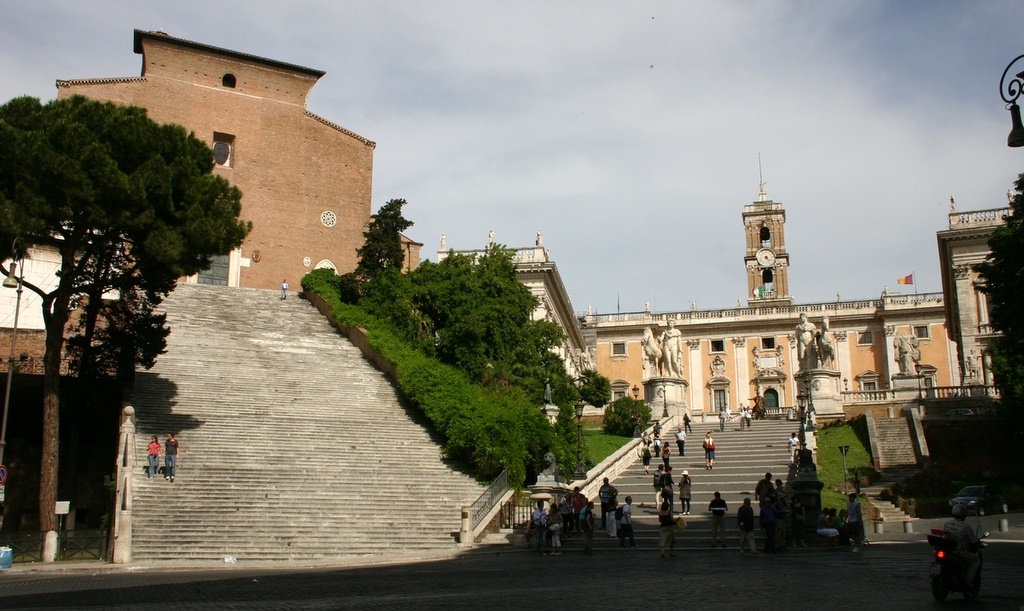
From the Piazza d'Aracoeli, two adjacent sets of steps ascend the Capitoline Hill, one leading to the church of S. Maria in Aracoeli, the other to Michelangelo's Campidoglio. The contrast between the two is extreme, and more than a simple matter of steepness. To those who first ascended them, they served very different purposes: the goal of the Aracoeli staircase was the medieval kingdom of God, while the goal of the Campidoglio staircase was the Renaissance city of man.
The climb to S. Maria in Aracoeli is perhaps the most physically challenging in the entire city: 124 steep steps of hard, unforgiving marble. The staircase was constructed in 1348, and it met an obvious need in improving access to the church above. But its deeper purpose was urgently felt by its builders. Italy had recently been ravaged by plague, and the steps were constructed in propitiation; survivors gave thanks for their deliverance by ascending to the church on their knees. For the fourteenth-century Romans, the staircase was a penitential offering to a wrathful God who had scourged the land with pestilence, and the long, arduous climb to the top was a punishing reminder that the wages of sin is death.
Michelangelo's famous approach to the Campidoglio – known to Italians as la cordonata – was designed not to punish but to invite. Its gentle slope prompts an easy and measured pace that produces a slow, majestic unveiling of the revoluntionary cityscape at the top. That cityscape is rigorously secular in design; for all its decorative statuary, the Piazza del Campidoglio possesses not a single Christian religious element, and its buildings completely hide S. Maria in Aracoeli from view. As designed by Michelangelo, the piazza and its seductive, theatrical approach reflect not God's power but man's – the newfound Renaissance ability of the human imagination to shape the urban environment in a way that, God-like, creates order out of chaos.
